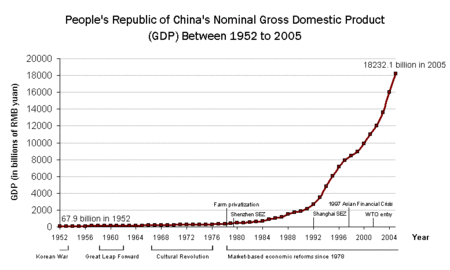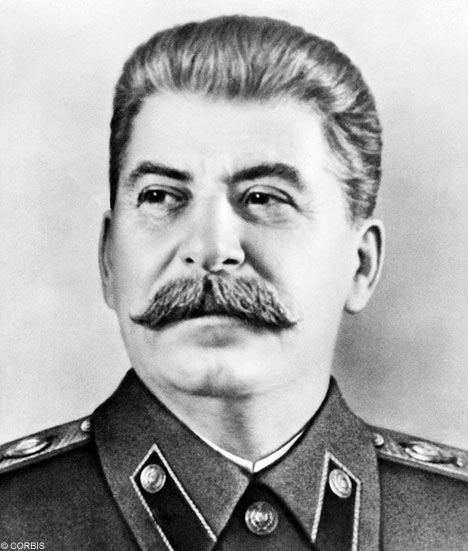Comparing Chinese and Russian Revolutions
By: Anna Dengler
|
The Russian and the Chinese revolutions stemmed under different circumstances and took different directions as their outcomes progressed, though they share one commonality: they both struggled to promote and establish communism. To understand these revolutions, one has to understand the background from with each comes from. The Russian revolution officially started out during the First World War Though tensions between the different social classes existed prior to the war, they did not take into full effect until the war progressed. Though the Russians certainly had a big army entering the war, they did not have the most advanced, which resulted in high casualties on the Russian side. Due to the alliance system between Russia, the Serbs and the French, Russia was sucked into entering the war. Finally in early 1917, the Russia Czar Nicholas abdicated his throne. Since his brother refused to take the throne, a provisional government was forced to set into place. Under the rule of Alexander Kerensky, the provisional government set forth to continue the war, secure borders and ultimately turn Russia into a liberal democracy. The peasants, worker and soldiers, also referred to as the soviets, did not agree with this plan and wanted out of the war and better rights. Previously established Marxist, Vladimir Lenin, took this opportunity to cease power of the soviets and convince them that they needed a stronger political structure, such as communism. Soon, a socialist party known as the Bolsheviks arose. Lenin wanted to rigidly nationalize all industries and assets of Russia and thus led the soviets to sign an armistice with Germany which allowed them to pull out of the war, though having to grant Germany a huge piece of western Russia. Russian circumstances which led to the beginning of the revolution included a difference of opinions between the equal soviets and provisional government and a need to reestablish the losses of a forced war, which included good leadership, food, and the numbers lost in their army. The Russian revolution did not last very long, since the soviets were already aggravated with the way things were run prior to the war and a people had a clear mindset going into the revolution with much determination. The soviets and the provisional government shared power after Czar Nicholas’ abdication, which made decision making and power much easier to acquire.
In China, the circumstances under which a revolution arose differed in quite a few ways from that of the Russians. The fall of the Manchu Dynasty resulted in Sun Yat-Sen gaining power and promoting a more westernized China, which wanted to push the controlling forces of Europe and Japan out. Yat-Sen believed in strict nationalism, socialism and a democracy. He proceeded in establishing his own political party, known as the Kuomindang (KMT), which was solemnly dedicated to his own goals. Though Yat-Sen died too soon to see his political party flourish, his successor Chiang Kai-Shek tried to follow through with his ideals. The start of this revolution was set around a time of war as well, although this time it was Word War two, and Chin was trying to keep the Japanese forces from taking over all of China. Along with having to keep the Japansese out of China, the KMT had to deal with growing numbers of communists in the North, who at this point was allied up with the Soviets. As opposed to in Russia, where Kerensky and Lenin disagreed on whether to stay in the war or not, the KMT and the communists joined forces in order to push out the Japanese. The United States regularly supplied the KMT with money to push out the Japanese, since they were viewed as a common enemy, whereas the soviets did not provide the Chinese communists with much help. As opposed to the Russian revolution, in which Russia was on its own, the Chinese KMT had consistent outside support from the United States in order to help stop communism. After Japan was successfully pushed out, the civil war continued and a new leader figure emerged amongst the communists: Mao Zedong. Zedong, along with his peasant supporters, continually pushed south, and eventually pushed the KMT to the island of Taiwan. |
|
After the Russian revolution ended successfully for the communists, Lenin jumped to rash and not well thought through plans. Since the revolution happened so abruptly with only the goal of communism in mind, the communists were stuck once they gained power, not having thought through how to approach leading a country after having gained power. Lenin set the New Economic Plan into place, which proved to be successful in an agricultural aspect, since it included capitalistic qualities, such as letting farmers sell some grain for profit. After Lenin’s passing, Joseph Stalin took power of the communist government. Stalin, being much more communist, even totalitarian, was unsatisfied with the New Economic Policy and instead set a Five Year Plan into action. This plan called for taking over private farms and turning them into state owned enterprises, constructing large factories and keeping the profits for the government. This resulted in many people dying trying to protect their farms. In the big picture aspect, this plan was successful for the Soviet Union, but Stalin depend on terror tactics. Stalin became more and more totalitarian, putting everyone who opposed him into labor camps or killing them. After Stalin’s death, Mikhail Gorbachev came to power and implicated new policies such as openness and reconstructing of the soviet economy. This shift of economic approach was to change the Soviet Union from a communist economy, back to a more stable and fair democracy. With capitalistic concepts, such as private enterprise, and a new Constitution, the Soviet Union was reformed and referred to as Russia again. This plan would turn out to be beneficial in the future, but was approached very rapidly, resulting in ten years of corruption and poverty. The previous communist country as not used to this rapid capitalism.
With the KMT successfully removed from China, the communist revolution ended, and the start of communist rule seemed to be taking place. Though this is true to a certain extent, the revolution would turn out to have many more capitalistic features to it as time continued on. Zedong’s views and ideals were successful at first, with many social reforms (similar to those of Russia) and a high increase in productivity. Zedong, however, tried too hard to aim towards a perfect Marxist state, resulting in local governments not being able to meet the agricultural quota that was set for the communes which were established. Through this fault in plan, over 30 million Chinese people died of starvation. At this point, China was agriculturally and industrially behind, and the Soviets had withdrawn their support from China, since they were not willing to cooperate under Russia’s orders. With no trading partner and no economic output, the plan of a Marxist state and full communism had ultimately failed China and new ideas had to be set in place. As soon as capitalism was introduced the progress in China was quick and extensive. Zedong, however, did not agree with this and called for a Cultural Revolution which led to all Chinese universities being shut down and forcing people to get back in touch with the ‘Communist Culture’. Just as Zedong’s attempt at full Marxism, this plan failed miserably, and China was forced to open itself up to Western ideas and a capitalistic economy. In 1976, the new leadership under Deng Xiaoping rapidly changed the policies Zedong had set into place, and focused on reconstructing the economy. Both Russia and China experienced extreme phases of communism, which eventually would turn out to be dreadfully wrong decisions. They both experienced great losses in numbers due to this extreme plan of action. Though China was able to recover better than Russia, who rushed into communism faster than China did, they still have communist traces lingering in the way the government rules over its country. The communist decisions in each country were rash and not well thought out. Due to the ever changing global economy and the rise of capitalism, neither Russia nor China would have been able to keep up economically, thus leading them to have to accept certain aspects of capitalism. Both revolutions started during a war and a time of disagreement between two different social classes. Though Russia’s revolution took place much earlier, China was able to recover from these communist implications much faster, leaving Russia to still be in a more communist than capitalist run country. Russia’s leaders were also much stricter and believed in true Marxist ideals much more than China’s leaders, which led them to slip into communism much deeper. |






